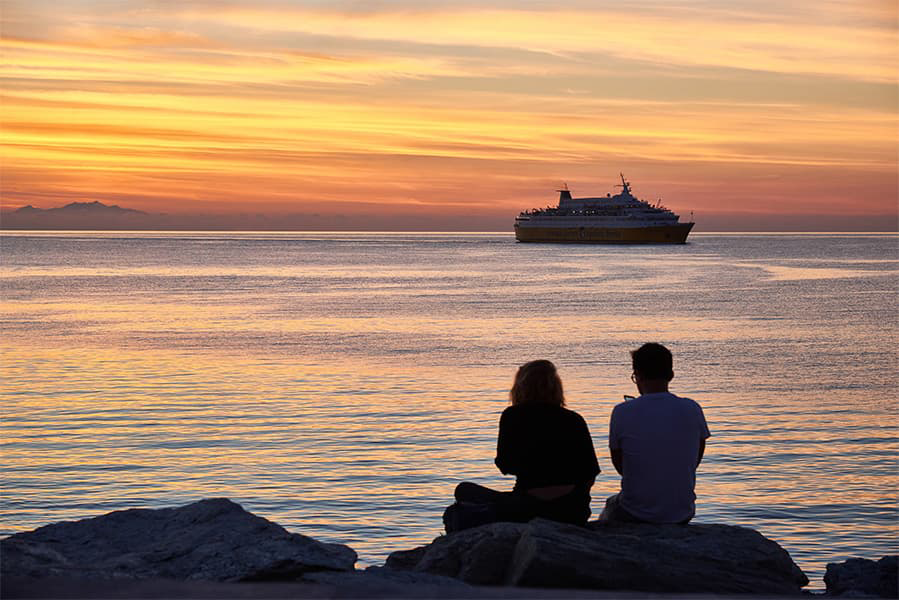Sark - Jersey (St Helier)
Ferries to Jersey
Sark - Jersey (St Helier)
Ferries to Jersey

The Sark Jersey ferry route connects Sark with Jersey. Currently there is just the 1 ferry company operating this ferry service, Manche Iles Express. The crossing operates up to 2 times each week with sailing durations from around 1 hour 10 minutes.
Sark Jersey sailing durations and frequency may vary from season to season so we’d advise doing a live check to get the most up to date information.
More routes than anyone else.

Compare fares, times & routes in one place.
Change plans easily with flexi tickets.

Book e-tickets & manage trips in-app.
Live ship tracking & real-time updates.

Top-rated customer support when you need it.
Sark is the fourth smallest of the Channel Islands and is situated in the English Channel, just off the Normandy coast. On arrival, your first sight of the island is the towering cliffs topped by steeply sloping common land, called cotils, covered in bluebells, thrift and daisies in the spring, then turning green, and finally bronze in the Autumn. Upon disembarkation at the Sark quay, you can choose to either walk up the harbour hill footpath which leads almost immediately to the village, with its selection of quaint shops and cafes, or those who do not wish to walk up can take a seat on the tractor-drawn bus instead. With no cars on Sark (tractors, bikes, horses and carriages only), the pace of life is leisurely and relaxed. The island provides a haven away from the noisy, everyday world; making it the perfect place to get away from it all.
Jersey ferry port terminal is located in St Helier and welcomes more than 750,000 passengers and 120,000 cars through its facility each year. There are 2 passenger terminals at the Port of Jersey - Elizabeth Terminal and Albert Terminal. Elizabeth Terminal is used by Condor Ferries year-round passenger and car ferry services, whilst Albert Terminal is used by Manche Iles Express for their seasonal passenger ferry services. St Helier is capital of the island of Jersey and is perfect for shoppers. The main streets - King Street, Queen Street, Bath Street and Halkett Street provide a wide variety of high street stores, small boutiques and gift shops with many retailers offering low duty free prices on various goods.